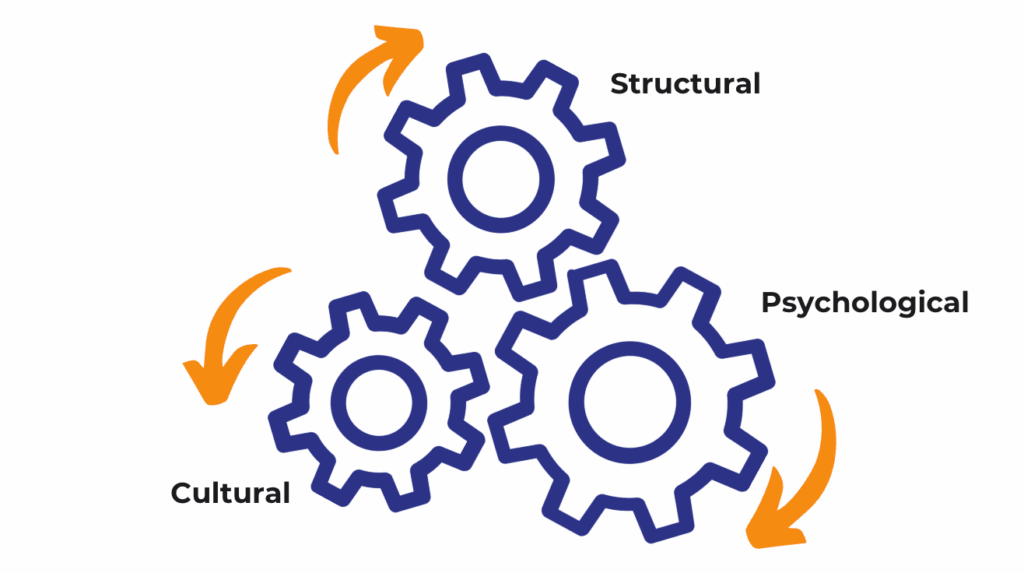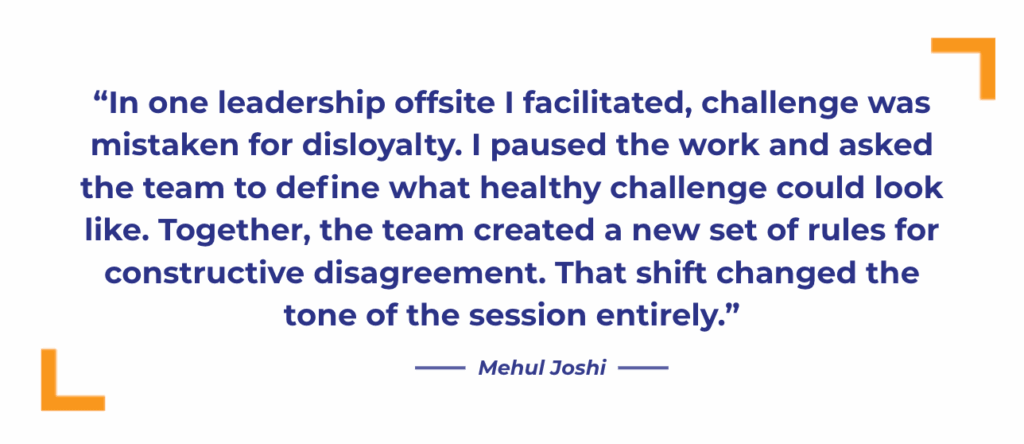Mehul Joshi, Senior Partner, Executive Coach and Facilitator
Constructive Challenge is a hallmark of high-performing executive teams. It is built on a strong foundation of mutual trust, allowing them to work through uncertainty and pressure, interrogate assumptions, make decisions aligned with strategy, and deliver results.
Yet, in our work with executive leadership teams, we find this type of healthy conflict is more often the exception than the norm.
Constructive Challenge in action
In June 2018, twelve young boys and their coach became trapped in the flooded Tham Luang cave in northern Thailand. As the world watched, a coalition involving Thai authorities, global military teams and expert cave divers launched a search and rescue mission.
After nine days, rescuers miraculously found the group alive. But celebration turned quickly to despair. The lead divers, experienced in cave rescues, concluded it would be impossible to bring the group out alive through the flooded tunnel system.
In response to the expert divers’ grim assessment that the rescue was impossible, one of the lead rescuers, US Air Force Master Sergeant Derek Andersen, asked: “What if it were possible? What does the impossible look like?”
Reframing the problem, disrupting group thinking and creating space for a new solution was Constructive Challenge in action. Sergeant Andersen’s questions unlocked the unthinkable, and the rescuing team put into action a daring, high-risk plan to extract the group involving full sedation underwater.
Against all the odds, the plan was a success. The rescuers brought the group out alive.
Why Constructive Challenge matters in executive teams
The Thai Cave Rescue is a story of courage, collaboration and endurance.
It’s also an example of the power of Constructive Challenge in unlocking high performance in a team.
Constructive Challenge is when teams question ideas respectfully, test assumptions, and consider diverse perspectives. It is crucial in executive leadership teams because it fosters better decisions, accountability, and innovation.
Without challenge, teams may fall into an “artificial harmony”.
Challenging ideas, not people, encourages leaders to defend and refine their thinking. This pressure testing leads to more rigorous analysis, uncovering risks, assumptions, and overlooked opportunities.
High-performing teams see challenge as a sign of respect, not conflict.
When done constructively, it strengthens trust and builds a culture in which difficult conversations are normalised.
Constructive Challenge also helps leadership stay aligned with the organisation’s goals by regularly testing whether actions, investments, and priorities align with the broader strategic objectives.
Why Constructive Challenge is often missing in executive leadership teams
Despite its obvious benefits, Constructive Challenge doesn’t come naturally to most executive leadership teams. Much of our work in developing high-performance executive teams involves creating conditions that allow for robust and respectful challenge.
When constructive challenge is missing in executive leadership teams, our starting point is to diagnose the underlying issues, which usually fall into three areas: psychological, cultural and structural.

1. A lack of psychological safety
When psychological safety is lacking, executives don’t feel safe to challenge others without risking their standing or relationships. At the executive level, there can be a fear of perceived career consequences, especially when challenging the CEO or more senior peers. The problem is exacerbated further if the CEO discourages dissent (even subtly). In such cases, we’ve noticed that challenge often disappears.
2. Cultural traits that inhibit debate
Cultural traits such as organisational hierarchy, consensus-seeking and deference to authority suppress healthy conflict in executive teams.
Leaders may be reluctant to admit gaps in knowledge or challenge others for fear of losing face.
3. Poor organisational structures, processes or disciplines
When members view the executive team as not being their “first team,” the perceived need for robust conversations is missing. It’s simply not worth the effort because they mistakenly think their first priority is leading their functional area.
Executive team meetings may also lack structure or mechanisms that enable respectful challenge, such as agreed-upon rules of engagement that actively encourage respectful dissent.
Under pressure, or when the meeting cadence is too infrequent, teams may default to fast consensus instead of engaging in rigorous debate. There’s often a push to “just get it done” rather than “get it right.”
The cost of avoiding Constructive Challenge
In my work with executive teams, the signs of an absence of Constructive Challenge can be subtle, but most of the time, they are glaringly obvious. Meetings look smooth, but nothing shifts. Risks get overlooked. Strategic alignment is assumed rather than tested.
Over time, these teams make slower decisions, deliver inconsistent outcomes, disengagement creeps in, trust erodes, and they struggle to adapt when conditions change.

How to unlock Constructive Challenge
Unsurprisingly, high-performing executive teams create the conditions for Constructive Challenge by focusing on the same three areas that often undermine it:
- They build psychological safety by modelling vulnerability, being open to input, asking questions, and showing they are willing to challenge themselves.
- They shape a culture where challenge is expected by setting clear expectations about how to disagree. The focus is on ideas, not individuals. Disagreement is seen as a commitment to outcomes, not a threat. Leaders withhold early judgment and actively invite diverse perspectives.
- They establish structures that enable challenge by embedding reflection and dissent into the decision-making process. Structures include time for pause, agreed-upon rules of engagement, and the space to test assumptions without fear of consequence.
I’ve seen this shift happen quickly when a team is ready to lean in.

Constructive Challenge is not about artificially creating conflict; it’s about creating the conditions for better thinking, trust, stronger alignment, and more effective execution.
If you’re interested in exploring your executive team’s level of Constructive Challenge or developing it as a capability, we’d be glad to have a conversation with you.










